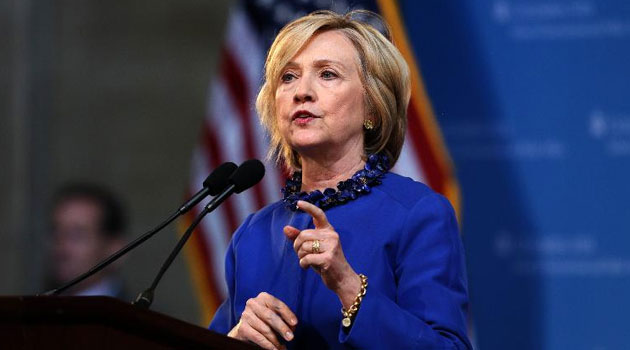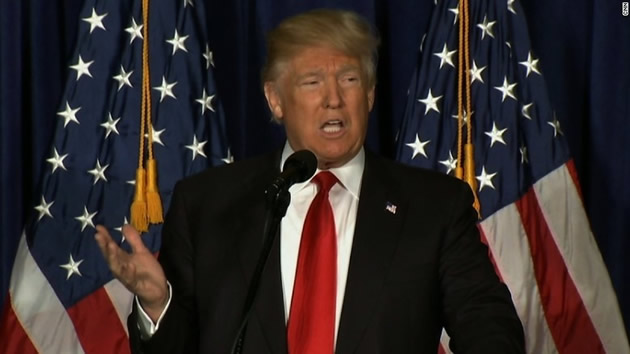US elections: The lesser evil phenomenon

Ismael Hossein-Zadeh Correspondent
Tragically, not only are the leaders of big unions not tapping into the rebellious popular mood to challenge the status quo, but they are, in fact, working very hard to contain rank-and-file workers not to vote for Bernie Sanders and, instead, vote for the candidate of the status quo, Hillary Clinton.
The ongoing presidential race in the United States has revealed a number of phenomena that seem to have been brewing under the surface of neoliberal austerity economics for years. For one thing, it has shown a widespread popular discontent with the status quo. For another, it has revealed that the American public is no longer averse to socialistic ideas.
The relative financial security of the “golden” years of the US economy (late 1940s–early 1970s), along with the Cold War propaganda of the “communist threat to our lives,” had created a strong aversion to socialism in the American psyche. But the change in the objective conditions (precipitated largely by the switch from New Deal economics to neoliberal economics) has led to change in consciousness. Evidence shows that the success of Sanders’ campaign has been not despite but largely because of his unabashedly professing to be a “democratic socialist.” This obviously means that, tired of the agonising austerity economics, considerable segments of the electorate have come to view socialism as an alternative to neoliberalism.
Under the prevailing conditions that are clearly favourable to an alternative to neoliberal economics, a logical question to ask is: where are the labour leaders? Where are Messrs Richard Trumka, president of the American Federation of Labour and Congress of Industrial Organisations (AFL-CIO), and his high-ranking labor lieutenants at the head of big unions? Why aren’t these influential labour leaders, representing 12.5 million union members, taking advantage of the popular anger to challenge the austerity economics of neoliberalism and chart an independent labour and/or grassroots movement that could lead to meaningful changes in favour of the working class and the broader masses of the dispossessed?
Tragically, not only are the leaders of big unions not tapping into the rebellious popular mood to challenge the status quo, but they are, in fact, working very hard to contain rank-and-file workers not to vote for Bernie Sanders and, instead, vote for the candidate of the status quo, Hillary Clinton. This was clearly reflected, for example, in a recent confrontation between the Clinton-endorsing leaders of big unions such as AFSCME (public employees), the Service Employees (SEIU), the Food and Commercial Workers (UFCW), and the American Federation of Teachers, on the one hand, and the Sanders-supporting leaders of smaller unions, on the other.
The face-off took place in a late February meeting in the Washington headquarters of the AFL-CIO. The big union leaders had planned the gathering to solidify the labour endorsement of Clinton’s candidacy. As Ralph Nader recently commented on the meeting,
“Tempers flared up when smaller unions challenged the Hillary-endorsing big unions . . . Listening to the nurses union head speak out for Sanders’ strong pro-labor history, Lee Saunders, president of AFSCME, interrupted her, exclaiming: I ‘will not allow you to do a commercial for Sanders.’ She retorted, ‘You mean for the only candidate who has a 100 percent labour record?’ A union leader of postal workers charged the unions backing Hillary as being ‘completely out of touch with their workers.’ AFL-CIO President Richard Trumka then cut off their microphones . . . Few union leaders allow a worker referendum to make the endorsement decisions. The 700 000-member Communications Workers of America (CWA) does, and the result was a decisive endorsement of Sanders.”
Nader further pointed out:
“The volunteer Lobar for Bernie grassroots drive is not just growing rapidly but cutting across all union categories and gaining support with non-union workers . . . Typical of this exodus is Northern California Food and Commercial Workers Local 5, whose executive board voted 30 to 2 for Sanders, reflecting the views of most of its 28 000 members.”
Class collaborationist policies of the labour bureaucracy follow from a self-defeating philosophy that is called “national business unionism” or “union-management partnership”.
National business unionism accepts capital’s needs for profitability as a precondition for labour’s need for survival, advocates collaboration with the capitalist class on a national or nationalist basis, and shoulders the burden of onerous economic sacrifices to maintain corporate profitability. A major outcome of this policy has been the change of many unions into labour syndicates: they have turned into businesses that seek a share in the profits sweated out of the workers.
For example, the United Auto Workers (UAW) is today a major holder of stocks in the Big Three automakers. Its income is tied to driving up the profits and stock prices of the companies at the expense of the workers. Its leaders forced an agreement on its members that included a six-year strike ban as part of the wage- and benefit-cutting contract dictated by the Obama administration’s Auto Task Force in 2009. The agreement also included curtailment of wages and benefits of new workers to about 60 percent of what auto workers previously made, elimination of overtime pay, and the policing of the shop floor by union representatives on behalf of the bosses. It is not surprising, then, that rank–and–file members no longer look to union leaders, “with their legions of six-figure-salaried officials and joint union-management slush funds, as instruments of struggle” on behalf of the working class .
Bernie Sanders’ and Donald Trumps’ campaign successes have been largely by default: they have greatly benefited from the fact that the discontented working people are passionately vying for change but their class-collaborationist leaders are trying to block change by supporting the candidate of the status quo, Hillary Clinton. How tragic, and what a shame: in the absence of an independent labour organisation and agenda, the dispossessed and working people’s energy devoted to supporting Sanders and Trump is bound to either dissipate or serve others’ agendas.
By channelling the popular outrage to further their campaigns, Trump and Sanders would inevitably end up channelling the energies and votes of their supporters to the Republican and Democratic parties. These candidates have been quite successful in stirring up the popular anger against the status quo. But they have also diverted attention from the main source of economic distress, inequality and injustice. While Trump blames ethnic, racial or religious scapegoats for the economic hardship of the largely white working people, whose long-cherished American dream has in recent years turned into nightmares, Sanders blames symptomatic manifestations of the capitalist system, Wall Street and/or big banks, not the system itself.
And while Trump’s diversionary tactics of sanitizing the capitalist system by blaming its sins on emigrants and other scapegoats is, more or less, obvious, Sanders’ sanitization of the system is more subtle. Despite the fact that his moralistic condemnation of Wall Street, of inequality and of injustice is reasonable enough to attract millions to his campaign, it falls way short of a causal explanation of economic problems. The real culprit is the profit-driven system of capitalism, especially its recent developments and manifestation: neoliberal economics.
Wall Street and/or big banks are of course products of capitalism. Sanders’ “exposition” of economic problems is, at best, half-hearted, at worst, obfuscationist. Many people applaud his courage to take on the giants of the Wall Street. But not many realize that in so doing, that is, in focusing on the effects of market mechanism, he tends to camouflage the cause, the systemic mechanism that gives rise to those giants.
What is that mechanism, the mechanism that systematically transfers economic/financial resources from Main Street to Wall Street, thereby further enriching the rich and impoverishing the poor?
Although expertly obfuscated and mystified, the planned or premeditated mechanism by which redistribution of economic resources from the bottom to the top takes place is fairly straightforward. The insidious mechanism of redistribution in favour of the financial oligarchy is benignly called monetary policy. Private central banks (such as the Federal Reserve Bank in the US) are the main institutional vehicles that carry out the monetary policy of redistribution. Central banks’ policies of cheap or easy money benefits, first and foremost, the big banks and other major financial players that can outbid small borrowers who must borrow at much higher rates than the near-zero rates guaranteed to the big borrowers.
By thus gaining privileged access to nearly interest-free money, the financial elites can enrich themselves in a number of ways. For one thing, they can snap-up income-producing assets at the expense of small borrowers who lack access to cheap money. For another, they can boost the value of their wealth by creating an artificial demand (such as stock buybacks) for those ill-begotten assets with the cheaply borrowed money. In addition, they can skim vast wealth by loaning out the cheap they obtain from central banks to everyone below the top of the wealth/income pyramid — at near four percent (mortgages), at seven or eight percent (auto, student and other loans), and above 15 percent (credit cards).
This shows how the proxies of the financial oligarchy, ensconced at the helm of central banks and their shareholders (commercial banks), serve as agents of subtly funnelling economic resources from the public to the financial oligarchy — just as did the rent or tax collectors and bailiffs of feudal lords collected and transferred economic surplus from the peasants/serfs to the landed aristocracy. Instead of regulating or containing the disruptive speculative activities of the financial sector, economic policy makers have in recent years been actively promoting asset-price bubbles — in effect, further exacerbating inequality.
It also shows that as long as this dynamic process of fostering the development of inequality and the rise of big business/big finance remains in place, no moral condemnation of Wall Street, of big banks and of social injustice, as repeatedly articulated by Bernie Sanders, would bring about meaningful economic relief to the overwhelming majority of the people. Nor would the actual break-up of big banks bring about the urgently-needed relief. For, breaking up a number of big banks while leaving the mechanism that precipitates the rise of big banks intact would be an exercise in futility: it makes little sense to fight symptoms without challenging the system that produces them. — Counterpunch.









Comments